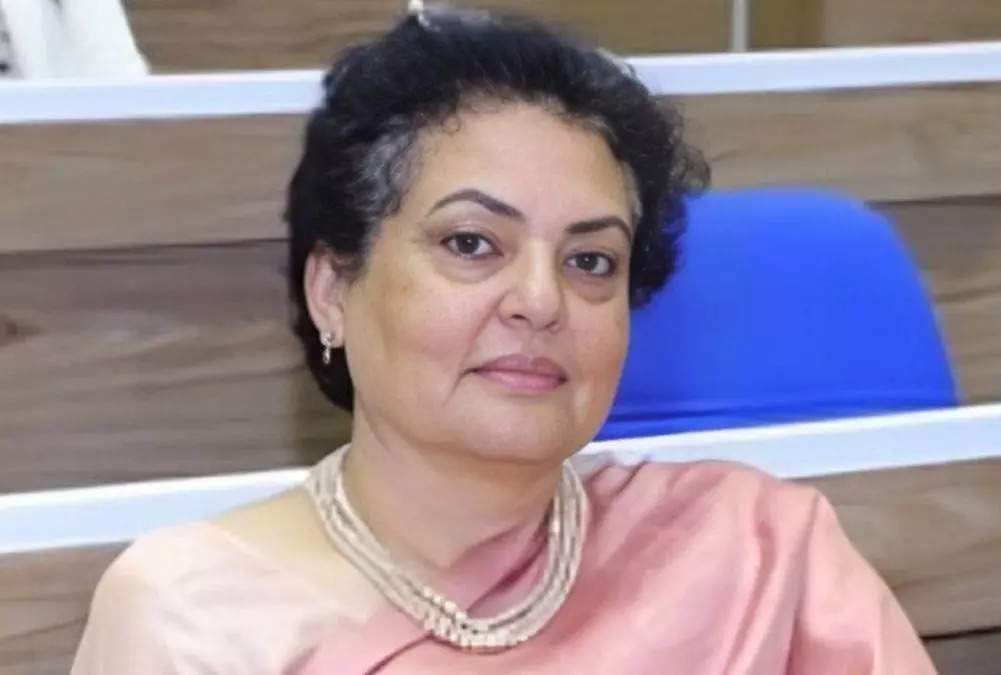
Women-led development will play a central role in achieving the vision of Viksit Bharat by 2047. Mission Shakti, one of our flagship initiatives, is a comprehensive framework for safety, security and empowerment of women. Under the Sambal sub-scheme, we have established One Stop Centres (OSCs) at the district level to provide immediate assistance to women in distress.
The Women Helpline (181) ensures 24/7 support, while the Beti Bachao Beti Padhao (BBBP) scheme continues to change mindsets and promote the girl child’s welfare. Additionally, the Nari Adalat initiative is being piloted to provide alternative grievance redressal mechanisms at the grassroots level. These interventions collectively foster a safe and enabling environment for women.
This was stated by Rekha Sharma, Member of Parliament, Rajya Sabha, and former Chairperson, National Commission for Women, in conversation with Anoop Verma, Editor-News, ETGovernment. In the interview that follows, Rekha Sharma sheds light on Modi Government’s initiatives for empowering women and supporting children.
Edited excerpts:
The government has launched initiatives to combat malnutrition and anaemia among women and children. What is the impact of these programs?
The government, under the visionary leadership of Prime Minister Narendra Modi, has been firm in its commitment to eradicating malnutrition and anaemia. Through Mission Saksham Anganwadi and Poshan 2.0, we have adopted a holistic, life-cycle approach to improve health, wellness and immunity. This initiative provides supplementary nutrition to children, pregnant women, lactating mothers and adolescent girls, ensuring they receive quality protein, healthy fats and essential micronutrients. The fortified rice distribution in Anganwadi centers and the emphasis on millet-based meals further strengthen our fight against malnutrition. These measures have significantly contributed to reducing the prevalence of wasting, stunting and underweight children.
The Anaemia Mukt Bharat (AMB) program has been a major step towards addressing anaemia. What is the strategy behind it? How do you see the effectiveness of this initiative?
Anaemia Mukt Bharat is an innovative and evidence-based program designed using the 6X6X6 strategy. It focuses on six target groups, including children, adolescents and women of reproductive age, and incorporates six critical interventions such as Iron and Folic Acid (IFA) supplementation, deworming and the provision of fortified foods. The program has ensured widespread awareness through intensive behaviour change communication campaigns. As a result, we are seeing a steady decline in anaemia prevalence, reinforcing the government’s commitment to improving maternal and child health.Women-led development is a key agenda of the government. How are policies ensuring the safety, security and empowerment of women?
Women-led development will play a central role in achieving the vision of Viksit Bharat by 2047. Mission Shakti, one of our flagship initiatives, is a comprehensive framework for safety, security and empowerment of women. Under the Sambal sub-scheme, we have established One Stop Centres (OSCs) at the district level to provide immediate assistance to women in distress. The Women Helpline (181) ensures 24/7 support, while the Beti Bachao Beti Padhao (BBBP) scheme continues to change mindsets and promote the girl child’s welfare. Additionally, the Nari Adalat initiative is being piloted to provide alternative grievance redressal mechanisms at the grassroots level. These interventions collectively foster a safe and enabling environment for women.
Economic empowerment is essential for women’s progress. What measures have been taken to support working women and mothers?
The government has implemented several initiatives to support working women and mothers. The Pradhan Mantri Matru Vandana Yojana provides direct financial assistance of ₹5,000 for the first child and ₹6,000 for the second child if it is a girl, ensuring proper maternal care. The Sakhi Niwas scheme promotes safe and conveniently located working women hostels in urban and semi-urban areas. The Palna scheme provides high-quality daycare facilities, integrating Anganwadi infrastructure to offer reliable childcare support. These measures help women balance their professional and family responsibilities effectively.
Protecting and rehabilitating children in difficult circumstances is a crucial responsibility. How does the government ensure this?
Child welfare is a top priority for the government. Mission Vatsalya is designed to provide care, protection, rehabilitation and reintegration of children in difficult circumstances. Under this mission, financial assistance is provided to States and Union Territories for setting up and maintaining Child Care Institutions, ensuring institutional and non-institutional care. The government is committed to eliminating child labour through stringent legislative measures and awareness programs. The Child and Adolescent Labour (Prohibition & Regulation) Act prohibits the employment of children under 14 in any occupation and enforces strict penalties for violations. The Juvenile Justice (Care and Protection of Children) Act mandates a security net for vulnerable children, ensuring their safety and well-being.
What role does community engagement play in these initiatives? How has it contributed to their success?
Community participation is a critical pillar of our strategy. Under Poshan 2.0, we have transformed nutrition awareness into a Jan Andolan (people’s movement). States and UTs actively conduct community-based events during Poshan Maah and Poshan Pakhwadas–Anganwadi workers engage with communities to promote better nutritional practices. This grassroots-level mobilisation has proven effective in changing behaviours and improving dietary habits. The Nari Adalat initiative empowers women at the Panchayat level to address grievances through mediation. These community-driven efforts ensure that government schemes reach the last mile and have a meaningful impact.
What message do you have for citizens regarding the government’s efforts in women and child welfare?
The Modi government believes that empowering women and ensuring child welfare are fundamental to the nation’s progress. Through robust policies and innovative programs, we have laid the foundation for a healthier, safer, and more empowered India. The success of these initiatives depends on collective participation. I urge every citizen to actively engage with these programs, spread awareness, and support the vision of Viksit Bharat. Together, we can build an India where every woman and child has the opportunity to thrive.
The Beti Bachao Beti Padhao scheme has improved girls’ education in Haryana. What are the new enrollment trends in secondary education?
As per UDISE+ data from the Ministry of Education, the Gross Enrolment Ratio (GER) for girls in Haryana’s secondary schools has shown remarkable progress. From 79.86% in 2014-15, it rose to 92.99% in 2020-21 and further to 93.24% in 2021-22. This steady increase reflects the success of the government’s efforts in promoting girls’ education and ensuring their rightful place in classrooms.


